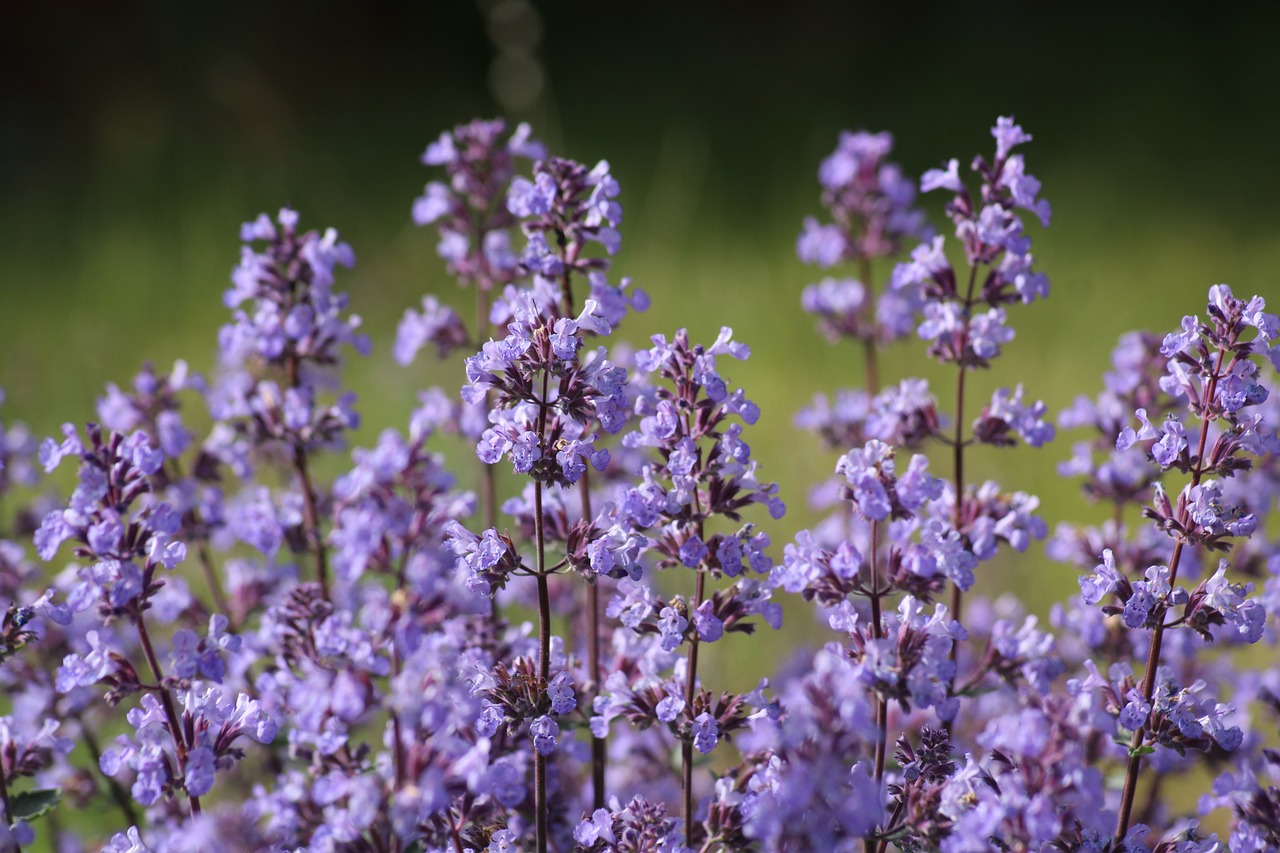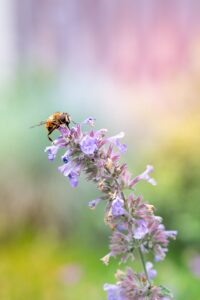Catnip
Overview
Catnip, or Nepeta cataria, is a perennial herb prized for its soothing effects. Originating from Europe to Central Asia, it’s traditionally been used to calm stomachs and aid sleep. Smoking dried Catnip leaves is said to provide a mild relaxation, with the plant also offering medicinal properties linked to compounds like nepetalactone. Despite its widespread use and minty scent, efficacy and dosage are largely anecdotal, and caution is advised for health risks.
Common name(s): Catmint, Catswort, Field Balm
Scientific name: Nepeta cataria

Characteristics
Known for its sedative effects on humans, euphoric reaction in cats, and traditional medicinal applications in soothing stomach issues and aiding sleep.
Region
Native to southern and eastern Europe, the Middle East, Central Asia, and parts of China; widely naturalized in northern Europe, New Zealand, and North America.
Natural Habitat
Found in the wild in fields and along stream banks or disturbed soil areas.
Cultivation
Prefers full sun or partial shade, regular watering to keep the soil moist, and well-draining soil with a pH of 6.1 to 7.8.
Traditional Usage
Catnip has traditionally served as a home remedy for a variety of health issues. Records and anecdotal reports have highlighted its use for:
- Soothing stomach upsets,
- Promoting sleep,
- Alleviating symptoms of colds and fevers,
- Calming nervousness, and
- Relieving minor digestive problems.
The minty scent released when catnip is crushed has made it a common ingredient in herbal teas and infusions. These traditional applications reflect historical practices which have been handed down through generations, underscoring the valued place of catnip in home health care2.
Historical Usage
Used historically in traditional medicine for ailments like stomach upsets and fevers, and possibly as an insect repellent.
Common Usage
Used in herbal remedies for sleep and stress relief, and as a recreational herb for its mild relaxing effects when smoked.
Effects
Catnip is commonly recognized for its soothing properties and is used to foster relaxation. Historical evidence suggests it was traditionally utilized for several health benefits. Today, people incorporate Catnip in herbal blends due to its potential calming effects. Here’s a quick look at Catnip’s general effects:
- Can act as a mild sedative, helping to reduce stress.
- May help alleviate insomnia and improve sleep quality.
- Could aid in reducing anxiety without the use of pharmaceuticals.
- Has been used to soothe stomach upsets and other minor digestive issues.
- Emits a minty scent when crushed, which is often enjoyed in teas and infusions.
- Famous for its unique impact on cats, typically causing a state of euphoria or relaxation.
While these effects have not been extensively studied in clinical trials, anecdotal evidence supports the mild relaxing benefits Catnip has on humans. It’s essential to note that individual responses can vary and beginning with a small dosage is advisable to monitor personal tolerance2 1.

Bee hovering over purple catnip flowers, a plant famed for its stimulating effect on cats and potential use in herbal remedies.
Effects when smoking
When choosing to smoke Catnip for its herbal benefits, it’s important to understand the potential effects. The primary attraction to smoking Catnip is its reputation for inducing a state of relaxation and calm. Here’s what to expect:
- Mild Relaxation: Many users report a subtle feeling of relaxation that can aid in stress relief.
- Less Potent Than for Cats: While cats may exhibit intense reactions to Catnip, the effect on humans is much milder.
- Sense of Calm: Some individuals notice a gentle soothing effect which may contribute to a sense of overall well-being.
- Variable Individual Responses: Not everyone experiences noticeable effects, which can vary widely from person to person.
The taste profile when smoking Catnip is generally mild and pleasant, with hints of mint, which can be an enjoyable aspect of the experience.
In terms of usage, it’s recommended to:
– Dry the leaves thoroughly
– Use Catnip sparingly to avoid respiratory irritation
– Begin with a small amount to gauge personal response
Be mindful of potential risks when smoking any herb, including Catnip. It’s also prudent for pregnant or breastfeeding women to abstain from use due to a lack of safety data3.
Catnip is fully legal and can be obtained in forms like dried leaves or essential oils. Each person’s experience with smoking Catnip can be unique, so proceed with care, and consider consultation with a healthcare professional before use.
Flavor Profile
Mild and pleasant with hints of mint and subtle earthy or grassy undertones.
Edible Parts
Leaves and flowers
Effects when Smoked
Produces a mild, relaxing effect, though less potent in humans than cats; some users report a slight calm or no effect.
User Experiences
User experiences vary, with some feeling mild relaxation and others noticing no significant effects after smoking Catnip.
Medicinal Benefits
Catnip, a perennial herb, is renowned for its soothing and calming properties and has been traditionally used for medicinal purposes. Its effects on humans, while subtle compared to its notorious impact on cats, include:
- Soothing stomach upsets
- Inducing sleep and countering insomnia
- Relieving colds and fevers
- Reducing stress and anxiety
- Alleviating minor digestive issues
Containing compounds like nepetalactone, which has mild sedative properties, Catnip may offer a natural alternative to tackle various conditions2. However, it’s vital to consider individual responses and consult healthcare professionals before incorporating Catnip into your routine, especially for those pregnant or with health concerns3.
History and Folklore
Traditionally, Catnip has been used for its medicinal qualities, helping to soothe stomach disorders, induce sleep, and treat symptoms such as colds and fevers. Its minty fragrance is an asset, particularly when brewed for teas and remedies. Over time, its applications have been wide-ranging, including its purported use as a natural insect repellent. This historical practice harnesses the strong aroma of Catnip, which has also been linked to its popularity among cats—a fascination that has been noted throughout history[1] [2].

Bee enjoying the allure of Catnip, a plant with a rich history of medicinal use and a delight for feline friends.
Side Effects and Contraindications
While Catnip is generally safe for most adults, there are some potential side effects and contraindications to be aware of. Smoking Catnip may irritate the respiratory system, so it’s important to use it in moderation. Individuals with allergies to the Lamiaceae (mint) family may also experience allergic reactions.3
Caution:
Pregnant and breastfeeding women are advised against using Catnip, as there is insufficient data on its safety for these groups. If you have any chronic health conditions or are taking medications, it’s best to consult a healthcare professional before using Catnip to avoid any unforeseen interactions or side effects.3
Concluding Note:
Remember, the quality and quantity of the herb can influence the side effects. Starting with a small amount and paying attention to your body’s response is key. Be observant and mindful of any negative reactions when smoking Catnip.
Legal Status
Catnip is seen as a benign herb from a legal standpoint. It is legal in most countries, often found in forms such as live plants, dried leaves, and essential oils. Without containing any controlled substances, Catnip does not fall under any specific drug regulation. As a result, you can obtain and use it without legal restrictions, making it a convenient addition to your at-home herbal collection for smoking or other uses. Just as with any herb, it’s important to use Catnip responsibly and be aware of personal sensitivities or allergies that could influence its effects on your body2.
References
1: Catnip – Wikipedia. https://en.wikipedia.org/wiki/Catnip
2: Catnip: Nepeta cataria – Lamiaceae (Mint) – MISIN. Michigan State University. http://www.misin.msu.edu/facts/detail/?project=misin&id=473
3: Catnip Plant – Forestry.com. https://forestry.com/plants/catnip-plant/
4: Nepeta (Catmint, Catnip) – North Carolina Extension Gardener Plant Toolbox. North Carolina State University. https://plants.ces.ncsu.edu/plants/nepeta/
5: Catnip – Nepeta cataria – PNW Plants. Washington State University. http://pnwplants.wsu.edu/PlantDisplay.aspx?PlantID=521
Image Credit: _Alicja_
Image Credit: DanielWanke
Image Credit: Ylanite
Nicolas Duval
Nicolas is a passionate advocate for nature and the art of wildcrafting. His dedication shines through in Wildcraftia, a website he meticulously crafted to serve as a haven for nature enthusiasts worldwide. Driven by a deep appreciation for nature’s connection to humanity, Nicolas embarked on his journey in 2011 with SmokableHerbs, a platform showcasing his love for nature’s bounty. Building upon this foundation, he established Smokably, a thriving online store offering premium herbs and blends to a global audience.
